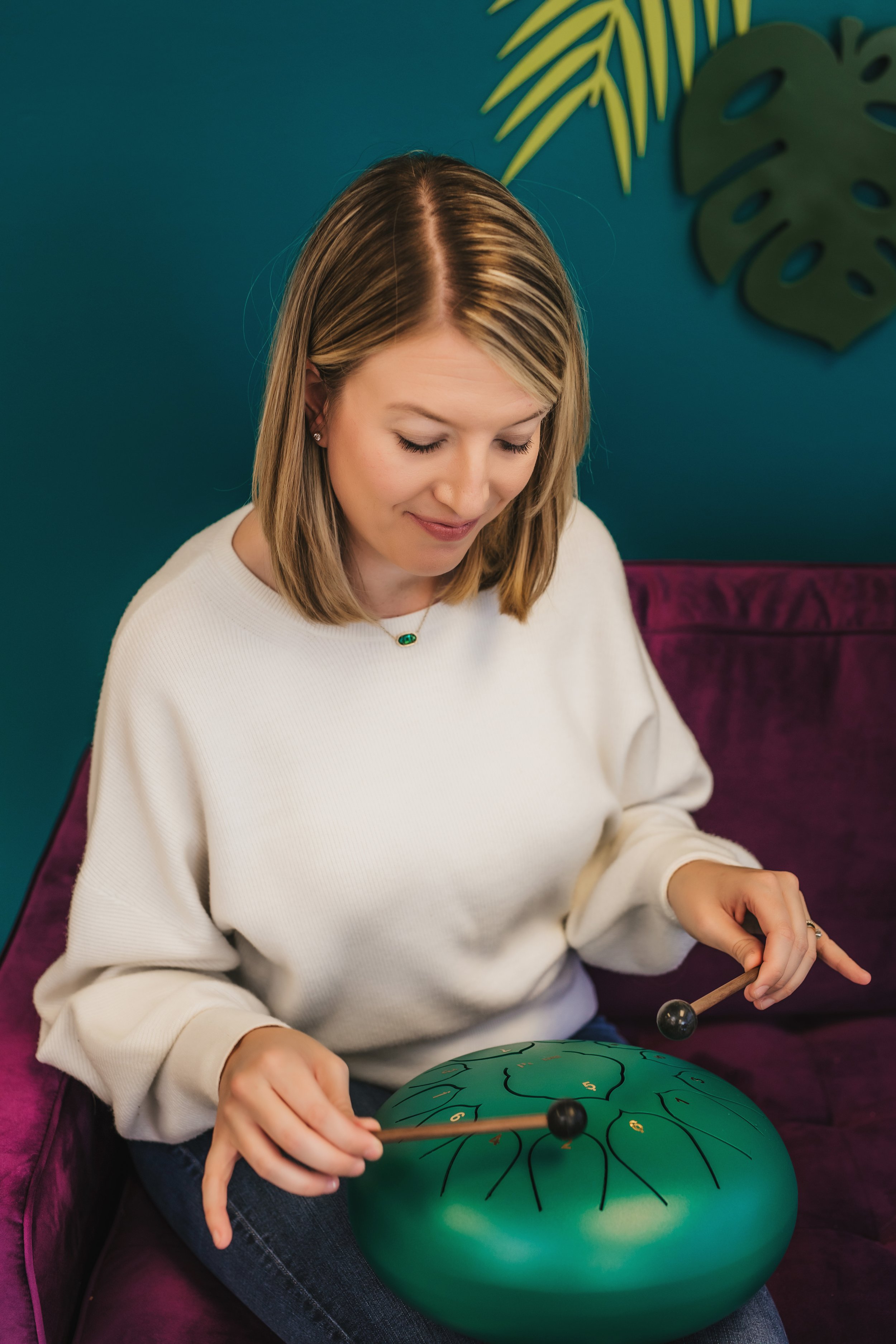
Recently on the Blog
The Transformative Power of Creative Flow
The Transformative Power of Creative Flow States
Have you ever found yourself so engaged in a task that the world around you seemed to disappear? Maybe you were playing an instrument, painting a picture, or writing a story. Regardless of the activity, time felt fleeting and nothing else mattered in that moment.
This happened to me during my first experience singing in a large choir when I was 14 years old. I remember feeling so overcome with emotion, joy, and connection as my voice blended into the beautiful embrace of of hundreds of other voices around me. I remember wanting to stay in that moment forever.
This state of complete focus and engagement referred to as creative flow, and it’s an essential tool we use in creative arts psychotherapy to help clients experience powerful transformation and growth.
Understanding Creative Flow
Creative flow (also known simply as flow), is something that has fascinated psychologists (founded & researched by Mihaly Csikszentmihalyi ), artists, athletes, and other professionals for decades. When you’re in flow, productivity soars, creativity blossoms, and time loses meaning. Whether you’re an aspiring writer, an artist, or an athlete, using the power of flow can offer significant rewards.
So how do you know if you’re in creative flow? A flow state is usually characterized by seven main features:
Intense Focus
During flow, you are entirely immersed in your activity—to the point where you may lose awareness of everything around you. You are entirely focused and concentrated on what you are doing at that moment.
Loss of Self-consciousness
In the flow state, you’re less aware of your own self and ego. you aren’t caught up with concerns about how you appear to others or how you’re performing; you’re simply "in the moment."
Clear Goals and Feedback
Flow often occurs when you have a clear understanding of your goals and receive immediate feedback about your progress. This feedback loop helps to maintain focus and motivation.
Effortless Action
Although you are deeply engaged in the activity, the work feels effortless. Your skills and abilities are perfectly matched to the task, making it feel natural and enjoyable.
Altered Sense of Time
Flow experiences can distort your perception of time. Hours may feel like minutes, or time can seem to stand still.
Intrinsic Motivation
Flow is typically driven by intrinsic motivation—the sheer joy and satisfaction of doing the activity itself—rather than external rewards or pressures.
Deep Enjoyment
People often report a heightened sense of enjoyment and satisfaction when in flow. It's a pleasurable and fulfilling state of being.
Creative Flow & Wellness
Flow is not only valuable for enhancing productivity and performance, but also for overall happiness and well-being. Cultivating activities and environments that promote flow can lead to increased creativity, improved problem-solving skills, reduced stress, and a greater sense of fulfillment in life.
Why I Use Creative Flow in Therapy
In the context of creative arts therapy, flow is the tool that fuels the therapeutic process. Flow can be used in the following ways:
A Gateway to Self-Expression
Creative flow provides a safe and non-judgmental space for clients to express themselves freely. In this state, the creative process becomes a channel for emotions, thoughts, and experiences that may be difficult to convey through traditional verbal communication. Whether we use art, music, dance, drama, or other creative mediums, it allows the client to tell their own unique story.
Healing Through Artistic Expression
For many individuals, the act of creating art within the flow state can be therapeutic in itself. It allows them to process and release emotions related to trauma, grief, or other challenging life experiences. Art becomes a healing tool that turns pain into something tangible.
Encouraging Mindfulness and Presence
Flow experiences naturally lead to a state of mindfulness, where you can be fully present in the moment. Creative arts therapy encourages clients to be aware of their thoughts, sensations, and emotions as they engage with the creative process. This mindfulness can be a powerful tool for reducing stress, anxiety, and depression.
Enhancing Problem-Solving Skills
Creative flow promotes divergent thinking and encourages clients to explore multiple perspectives and solutions. As they navigate the creative process, they develop problem-solving skills that can be applied to real-life challenges. Creative arts therapy becomes a training ground for resilience and adaptability.
Fostering Self-Awareness & Insight
Through creative flow, clients gain insight into their own inner world. They may discover hidden talents, uncover buried emotions, or gain a deeper understanding of their personal narratives. This heightened self-awareness can be a catalyst for personal growth and positive change.
Strengthening Therapeutic Relationships
There is nothing more effective in a client’s growth in the therapy process than the strength of the therapeutic relationship. For therapists, being with clients within creative flow experience fosters trust and connection. Clients feel seen, heard, and supported as they creatively explore sense of self.
If you are interested in learning more about creative flow and how it can elevate your sense of wellbeing, follow me on Instagram (@connectwithmegan) for more!













